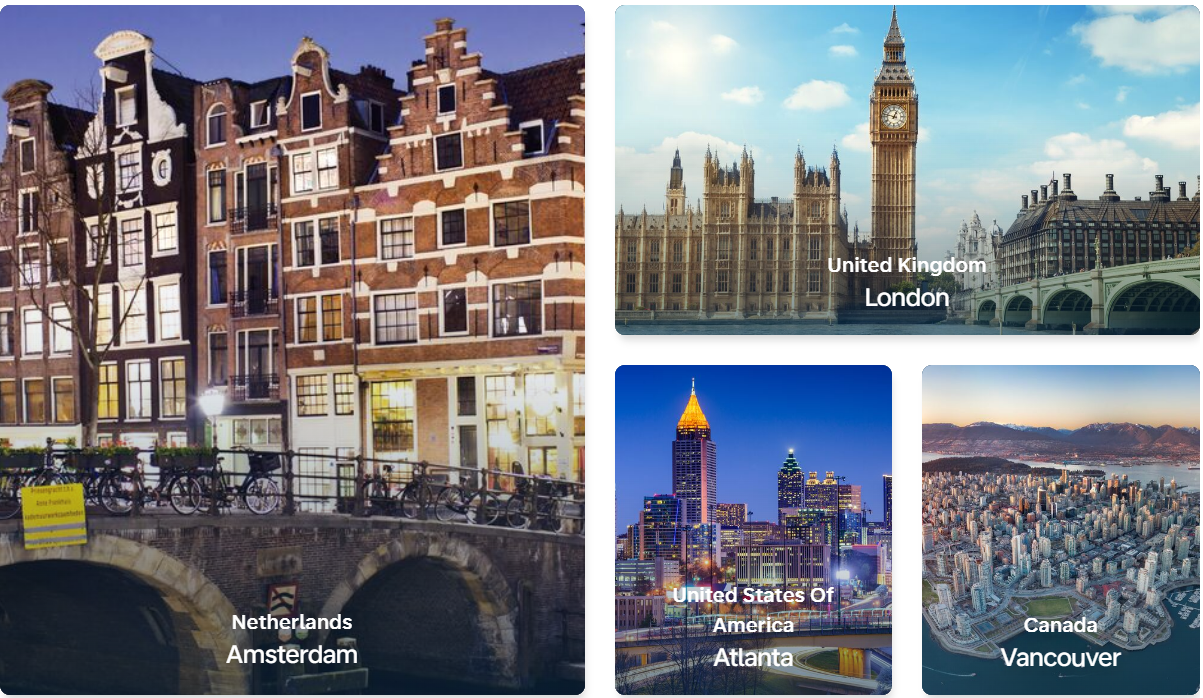
In an age of social media-fueled wanderlust, it’s easy to feel like the world has already been discovered. Iconic cities like Paris, Rome, and Tokyo dominate bucket lists, while once-quiet destinations such as Bali or Santorini now see millions of tourists annually. But beyond the well-worn paths lie lesser-known treasures—places where culture, nature, and authenticity thrive away from the crowds. These hidden gems offer rich experiences for travelers craving something more unique, intimate, and unforgettable.
Let’s journey across continents to uncover these rare finds and rekindle the thrill of true discovery.
1. Colchagua Valley, Chile
Why Go: For an immersive wine country experience that rivals Napa—without the crowds.
Just two hours south of Santiago, Chile’s Colchagua Valley is a picturesque region of rolling vineyards, boutique wineries, and charming colonial towns. While neighboring Mendoza in Argentina gets more international attention, Colchagua remains refreshingly under the radar.
Here, visitors can explore small family-run vineyards, sample some of the best Carménère in the world, and dine farm-to-table surrounded by the Andes foothills. Santa Cruz, the valley’s central town, offers cozy accommodations and an impressive wine museum. Come during harvest season (March–May) for vibrant festivals and grape-stomping celebrations.
2. Mostar, Bosnia and Herzegovina
Why Go: A fairytale-like cityscape steeped in resilience and cultural fusion.
Tucked into the hills of southern Bosnia, Mostar is often overshadowed by its flashier neighbors in Croatia. But this gem shines with its own unique magic. The medieval Old Bridge (Stari Most), arching over the emerald Neretva River, is not only a breathtaking sight but a powerful symbol of reconciliation following the region’s turbulent history.
The city is a tapestry of Ottoman, Mediterranean, and Slavic influences. Wander through cobbled streets, sip strong Bosnian coffee, and chat with local artisans in the bazaar. And don’t miss the daredevil divers leaping from Stari Most into the river below—a tradition with centuries of history.
3. Isle of Eigg, Scotland
Why Go: For raw nature, community-powered living, and hauntingly beautiful landscapes.
Among the Inner Hebrides off Scotland’s west coast lies the tiny Isle of Eigg—a place where dramatic cliffs meet lush green meadows, and the only sounds you’ll hear are wind, waves, and birdsong. Home to fewer than 100 residents, Eigg is entirely owned by its community and runs on renewable energy.
Visitors can hike to the summit of An Sgurr, a volcanic peak with sweeping views of the sea, or walk the Singing Sands beach, known for the eerie tunes its quartz sand produces when disturbed. There’s no glitz here—just unfiltered beauty, local hospitality, and a deep connection to the land.
4. Kagawa Prefecture, Japan
Why Go: For quiet island life, traditional Japanese culture, and astonishing art installations.
While Tokyo, Kyoto, and Osaka dominate Japanese itineraries, Kagawa Prefecture—located on the island of Shikoku—offers a more peaceful, artistic experience. It’s home to the Setouchi Triennale, one of the world’s most exciting contemporary art festivals, scattered across a series of islands like Naoshima and Teshima.
Even outside festival seasons, the region boasts a wealth of attractions: tranquil temples, historic hot springs, and Japan’s best udon noodles. Takamatsu, the capital city, has beautiful gardens, a laid-back pace, and easy ferry access to the artistic islands of the Seto Inland Sea.
5. Lofoten Islands, Norway
Why Go: For otherworldly Arctic beauty with a Viking soul.
North of the Arctic Circle lies a chain of dramatic, jagged peaks rising out of deep blue fjords—the Lofoten Islands. Though they look like a fantasy film set, these islands are very real and blissfully uncrowded, especially in shoulder seasons.
Stay in rorbuer (traditional red fisherman cabins), kayak in crystal-clear waters, or hike to Reinebringen for one of Europe’s most epic views. Come in winter for Northern Lights magic or in summer for the Midnight Sun. Lofoten blends wild nature, Norse heritage, and modern sustainability in a way few destinations can.
6. Jaffna, Sri Lanka
Why Go: For spiritual depth, Tamil culture, and colorful coastal towns.
While Sri Lanka’s south coast draws surfers and beach lovers, Jaffna in the north offers a vastly different, deeply cultural experience. This Tamil-majority city, once cut off by civil conflict, has reemerged as a vibrant cultural hub with Hindu temples, Dutch colonial architecture, and flavorful cuisine.
Take a boat to the nearby island of Delft, where wild horses roam among ancient baobab trees. Explore the towering Nallur Kandaswamy Kovil temple, and don’t miss local delicacies like crab curry and Jaffna dosa. With its welcoming locals and slow rhythm, Jaffna invites introspection and meaningful travel.
7. Svaneti, Georgia
Why Go: For ancient traditions, dramatic Caucasus landscapes, and mythic allure.
Georgia (the country, not the U.S. state) is already a rising star among adventure travelers, but Svaneti—its most remote region—is still a secret to many. Towering above the clouds in the Greater Caucasus Mountains, the villages of Svaneti feel frozen in time.
Stone defense towers dot the hillsides, relics of centuries-old feudal battles. The Svan people speak their own language and preserve customs dating back to medieval times. Base yourself in Mestia and trek to the ancient village of Ushguli, one of Europe’s highest settlements, where glaciers sparkle and eagles soar.
8. Karimunjawa Islands, Indonesia
Why Go: For an island paradise without the Instagram saturation.
Indonesia is made up of over 17,000 islands, and most tourists only scratch the surface. For a more untouched escape, head to the Karimunjawa Islands, a small archipelago north of Java with crystal waters, pristine reefs, and sleepy fishing villages.
Snorkel among sea turtles, hike jungle trails, or simply swing in a hammock with a fresh coconut in hand. Tourism here is still low-key, so eco-lodges and local homestays are the way to go. It’s the kind of place where sunsets are shared in silence, and time seems to stand still.
9. Salento, Colombia
Why Go: For vibrant color, coffee culture, and surreal landscapes.
Tucked in the Andean foothills of Colombia’s coffee region, Salento is a kaleidoscope of painted balconies, colonial charm, and misty mountain air. While Medellín and Bogotá may be more famous, Salento offers a slower, sweeter slice of Colombian life.
Hike through the otherworldly Cocora Valley, home to the tallest palm trees on Earth, or tour organic coffee farms with passionate growers. The town’s relaxed vibe, artisan markets, and hearty meals (trout with plantains is a must) make it perfect for travelers looking to connect with both nature and local tradition.
10. Matera, Italy
Why Go: For ancient cave dwellings turned cultural icons.
Most travelers to Italy flock to Rome, Florence, and Venice. Few venture to Matera, a city in the southern region of Basilicata where homes and churches are carved directly into limestone cliffs. These “sassi” (stone dwellings) date back thousands of years and give Matera an almost biblical aura.
Once considered a symbol of poverty, Matera has transformed into a cultural beacon with boutique cave hotels, galleries, and gourmet dining. It was even crowned a European Capital of Culture in 2019. Wander its winding alleys at dusk, and you’ll feel like you’ve stepped into a forgotten world—yet one teeming with creativity and life.
Final Thoughts: The Beauty of the Unfamiliar
Travel has the power to awaken curiosity, challenge assumptions, and foster connection. While popular destinations have their appeal, hidden gems provide something increasingly rare: a chance to engage deeply, discover authentically, and experience the world through a new lens.
Exploring lesser-known places isn’t just about escaping crowds—it’s about expanding our understanding of the world and our place in it. Whether it’s sipping wine in Chile’s valleys, tracing ancient traditions in Georgia, or watching the sun dip below Norwegian fjords, these off-the-beaten-path destinations remind us that magic still exists in the unexplored.
So, next time you plan a trip, skip the typical. Seek the soulful. Chase the hidden.






















